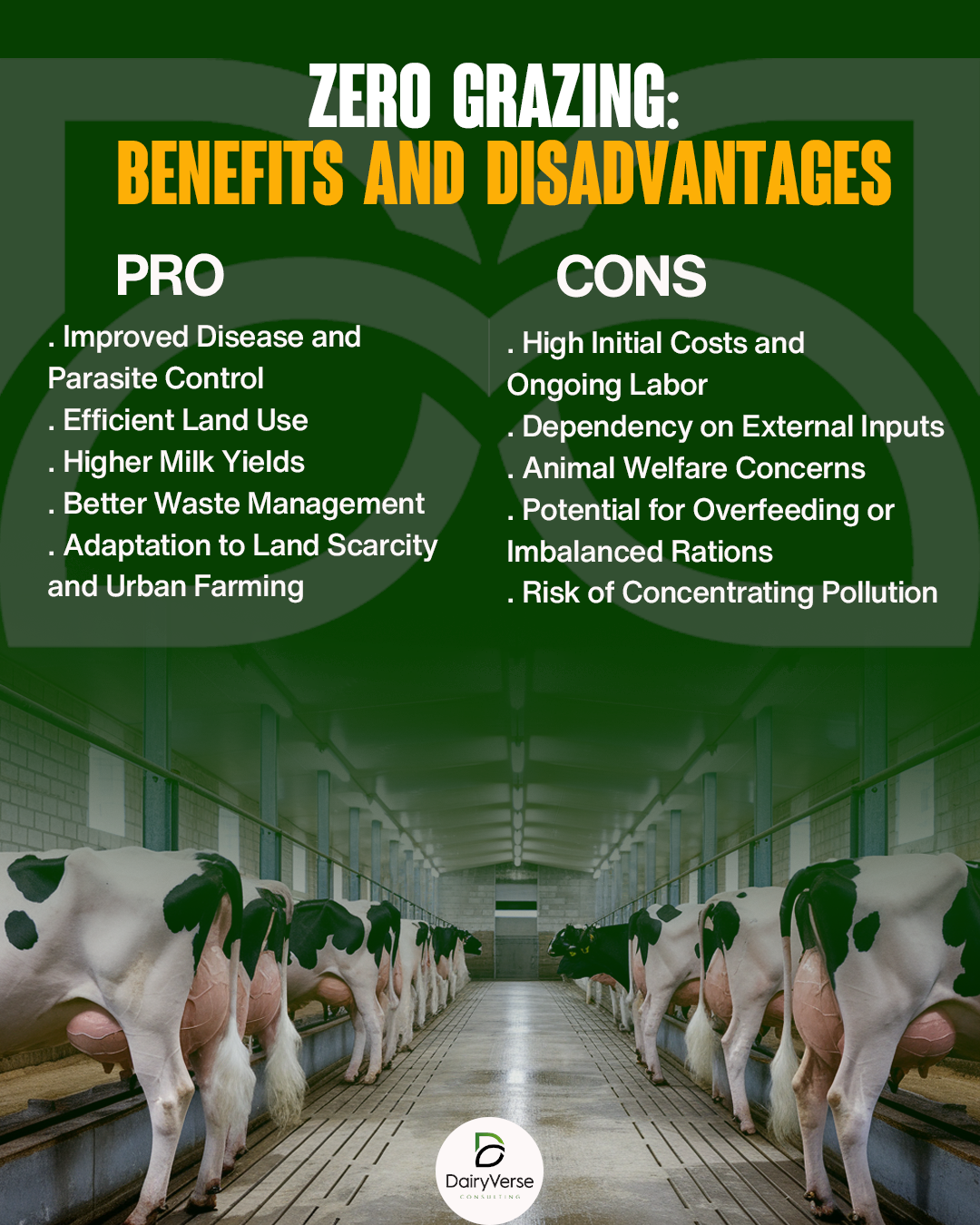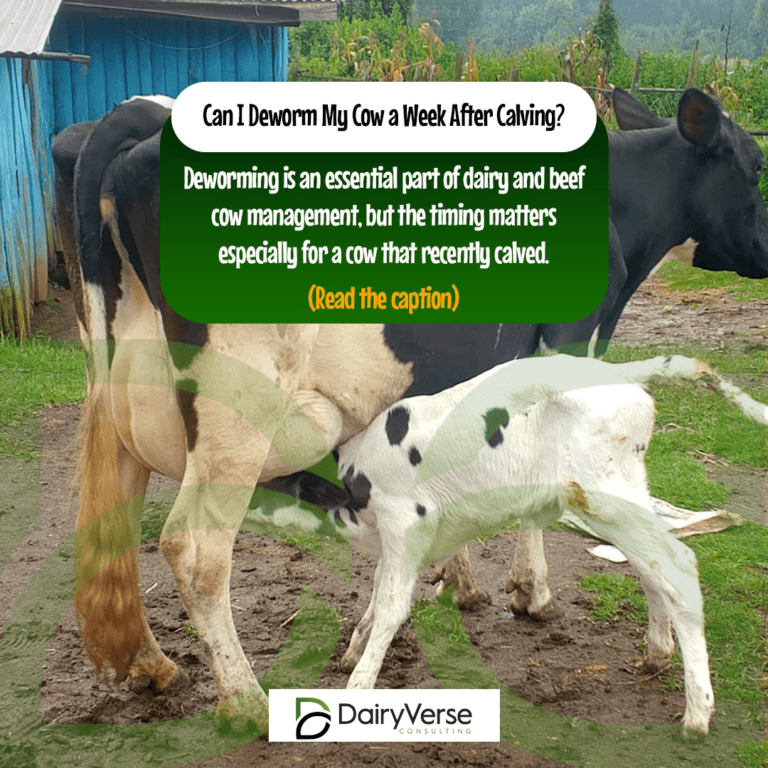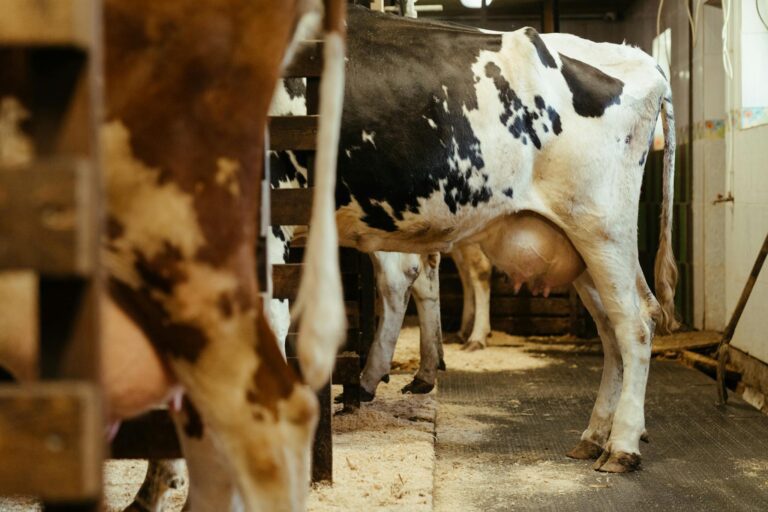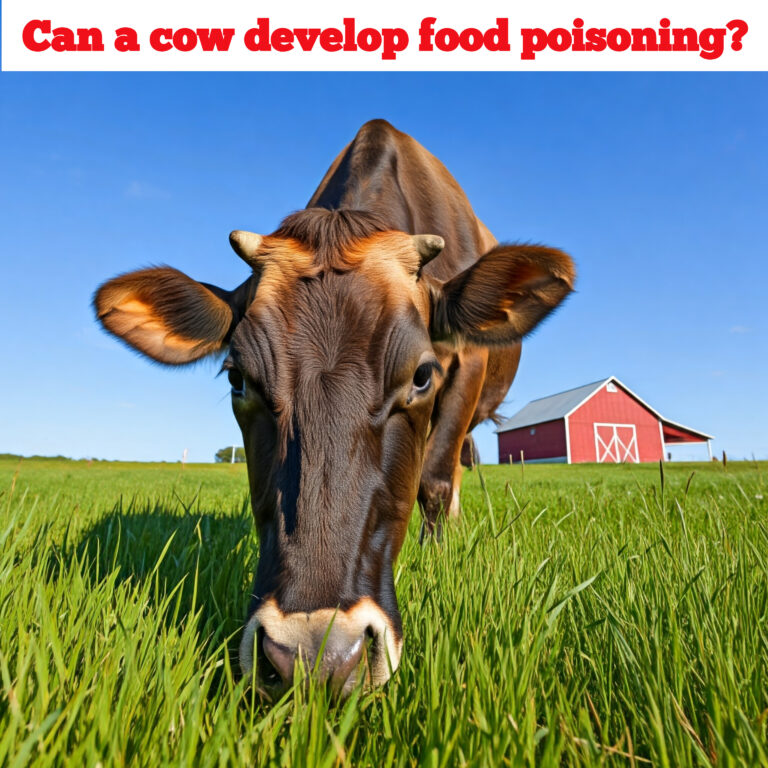Zero Grazing: Benefits and Disadvantages
Zero grazing (also known as “cut-and-carry” feeding) is a livestock management system in which animals—often dairy cows—are kept in a confined area or stall and fed with fresh fodder that is cut and brought to them. This contrasts with conventional grazing, where animals roam in a pasture and graze directly on grass or forage crops. Zero grazing has become popular in regions with limited land availability or high population densities, as well as where feed management and disease control are priorities.
How It Works
- Housing: Livestock are confined to a barn, shed, or penned structure designed for comfort and biosecurity.
- Fodder Cultivation and Harvesting: Farmers grow or purchase high-quality forage such as Napier grass, maize fodder, alfalfa, or other forage crops. Instead of letting animals graze in the field, the farmer cuts the grass or fodder and transports it to the animals.
- Supplementary Feeding: In addition to green fodder, feed supplements (e.g., concentrates, minerals, and vitamins) are provided as necessary to balance the animals’ diet.
- Manure Management: Since animals remain in one place, manure can be collected and used for biogas production or applied to fields to enrich the soil.
- Water Supply and Hygiene: Clean water is supplied at all times, and strict hygiene standards are maintained within the housing area to reduce disease.
Advantages (Pros)
- Efficient Land Use
- High stocking rate: Zero grazing allows a higher number of animals to be raised on a smaller plot of land because animals do not need the space to roam.
- Targeted fodder production: Farmers can dedicate specific fields to growing high-quality forage. This approach often yields more nutritious feed per unit area compared to open grazing.
- Improved Disease and Parasite Control
- Biosecurity: By limiting interaction with external environments, animals have less exposure to parasites, ticks, and diseases commonly picked up in open pastures.
- Easier observation: Confined housing makes it simpler for farmers to observe their livestock daily. Early detection of health issues like mastitis or lameness becomes easier.
- Higher Milk Yields (Especially for Dairy)
- Consistency in diet: Zero-grazed dairy cows often receive carefully measured, high-quality feed rations. A consistent diet can boost milk production and maintain better body condition.
- Reduced energy expenditure: Since animals do not travel long distances in search of forage, they can conserve energy that can then be channeled into milk production.
- Better Waste Management
- Manure utilization: Collecting manure in a controlled environment makes it easier to use as fertilizer or in biogas digesters. This reduces nutrient waste and helps maintain soil fertility on the farm.
- Adaptation to Land Scarcity and Urban Farming
- Suitability for small-scale farms: Zero grazing is popular among smallholder farmers and urban farmers with limited land.
- Flexibility in location: In some cases, farmers who live in urban or peri-urban areas can purchase fodder from outside, allowing them to raise dairy animals without large grazing fields.
Disadvantages (Cons)
- High Initial Costs and Ongoing Labor
- Infrastructure investment: Zero grazing requires constructing shelters, feeding troughs, and (potentially) manure handling systems. The cost can be prohibitive for small-scale farmers with limited capital.
- Labor-intensive: Daily fodder harvesting, cleaning of stalls, feeding, and waste management can be time-consuming. This added labor cost can reduce overall profitability unless carefully managed.
- Dependency on External Inputs
- Feed security: If a farmer cannot grow enough of their own forage (due to drought, limited land, or other constraints), they may have to buy fodder or feed concentrates, which can be expensive.
- Vulnerability to market fluctuations: The cost of supplementary feeds and fodder can fluctuate, impacting the profitability of the system.
- Animal Welfare Concerns
- Limited freedom of movement: Animals confined to barns or pens have restricted movement, which can lead to stress and potential health issues like hoof problems if the housing environment is not properly maintained.
- Boredom and behavioral issues: If the animals do not have enrichment or enough space, behavioral issues may arise. Proper design, space, and enrichment are crucial for good welfare.
- Potential for Overfeeding or Imbalanced Rations
- Diet formulation challenges: While it can be easier to control the quantity and quality of feed in zero grazing, mistakes in feed formulation—either overfeeding or underfeeding certain nutrients—can result in health problems and reduced productivity.
- Need for nutritional expertise: Farmers must pay close attention to the feed mix to avoid metabolic disorders such as acidosis or hypocalcemia in dairy cows.
- Risk of Concentrating Pollution
- Manure buildup: If manure is not managed effectively, it can accumulate and pose environmental risks (e.g., water pollution, harmful odors).
- Ammonia and greenhouse gas emissions: Poorly managed waste systems can lead to ammonia release and increased methane emissions from stored manure.
Best Practices for Successful Zero Grazing
- Plan Your Fodder Production: Ensure you have a reliable source of high-quality forage. If you cannot grow enough, establish relationships with local farmers or suppliers to secure a consistent supply.
- Design Adequate Housing: Provide sufficient space for each animal, good ventilation, and proper drainage. Flooring should be non-slip and comfortable (e.g., rubber mats or bedding).
- Optimize Feed Rations: Consult with veterinary nutritionists or extension officers to design balanced diets that account for protein, energy, minerals, and vitamins.
- Maintain Strict Hygiene: Clean the shelter regularly, remove manure promptly, and sanitize feeding troughs to reduce disease risk.
- Monitor Animal Health: Conduct regular veterinary check-ups and keep accurate health records. Identify and address problems (e.g., lameness, mastitis) quickly.
- Use Manure Efficiently: Compost or otherwise treat manure before applying it to fields or using it for biogas, ensuring that nutrients are recycled effectively without harming the environment.
Conclusion
Zero grazing can be an efficient livestock management system, particularly in areas with limited land or where intensive dairy production is a priority. It offers clear advantages in biosecurity, milk yield, and controlled feeding, but these benefits must be balanced against higher initial investments, labor requirements, and potential animal welfare concerns. With proper planning—both for fodder supply and housing infrastructure—zero grazing can be an economically and environmentally viable option. However, it is crucial to address nutritional, housing, and waste management factors carefully to ensure both productivity and animal well-being.
o1







